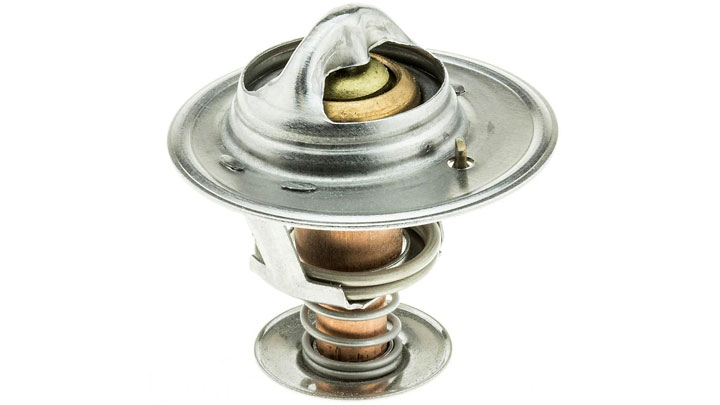5 Symptoms of a Bad Thermostat
Is your engine overheating or taking forever to warm up? The root cause may be a faulty thermostat improperly regulating coolant flow.
Learn to recognize the symptoms of a stuck open or stuck closed thermostat, a small but extremely important component for proper engine temperature. Fortunately, the cost to replace the thermostat isn’t sky high and DIY replacement is easier than you think in some cases.
Bad Thermostat Symptoms
A failing car thermostat can significantly impair your engine’s performance and functionality. Fortunately, there are several easily recognizable symptoms that indicate a faulty thermostat.
It’s important to make replacing failed thermostat a high priority in order to prevent irreversible engine damage that can be caused by prolonged overheating.
#1 – Temperature Gauge Reading Higher (or Lower) Than Normal
When starting your car after it has been sitting overnight or for a few hours, the temperature gauge needle should be on the “Cold” side. As you drive, the needle should slowly move up to about the midway point, indicating the optimal engine operating temperature.
If the thermostat is stuck closed, it will prevent coolant from flowing into the engine, causing the temperature gauge to continue rising until it reaches the “Hot” end. You may even notice steam coming from your engine compartment. Continuing to drive in this condition increases the risk of engine damage.
Always monitor the engine temperature gauge and pull over to allow the engine to cool down if you notice the temperature rising higher than normal.
Conversely, if the thermostat is stuck open, the temperature needle will move up much slower than usual and may stop before reaching its normal mid-point. If you notice this, try turning on your heater. If it doesn’t blow warm air, it’s likely a broken thermostat.
#2 – Sudden Air Temperature Changes Inside the Vehicle
One of the more noticeable symptoms of a faulty thermostat is sudden changes in the air temperature inside your vehicle. If you experience a sudden drop in temperature followed by a rapid spike, it’s a strong indication that your thermostat is not regulating the coolant flow properly.
These temperature fluctuations can be uncomfortable for passengers and are often unrelated to your HVAC settings.
#3 – Coolant Leaking
A faulty thermostat most likely causes it to remain in its closed position. This means when the engine is running hot and the coolant normally flows toward it, the closed thermostat will block the coolant from going into the engine. This will cause the coolant to overflow from the thermostat housing.
If it stays like this and you don’t do anything to fix it, your coolant hoses will be the next things that leak. The quickest way to see if you’re leaking coolant is to just check under your vehicle. If you see green-ish or red-ish liquid leaking out of your vehicle and staining the surface underneath, then you definitely have a coolant leakage situation.
A stuck-closed thermostat prevents coolant from circulating through the engine, causing a buildup of pressure in the cooling system. As a result, coolant may leak from the thermostat housing, radiator, or hoses.
#4 – Rumbling Noises
Specific, unusual noises coming from your vehicle’s engine or radiator are another sign of a thermostat problem. These sounds may resemble rumbling, knocking, boiling, or gurgling.
Rumbling noises often occur when coolant is unable to circulate properly due to a stuck-closed thermostat, causing the engine to overheat. Boiling or gurgling sounds may indicate that your coolant is overheating and bubbling inside the radiator or engine.
#5 – Heater Malfunction
In colder climates or during winter months, a stuck-open thermostat can cause issues with your vehicle’s heating system. A thermostat that remains open, allows coolant to flow continuously through the engine, even when it’s not needed.
This may not allow the engine to reach its optimal operating temperature, resulting in cool air blowing from the vents when you have the heater turned on.
If you find that your heater is not working effectively, particularly if the air remains cool regardless of the temperature setting, it could be a sign of a stuck-open thermostat in addition to typical heater core related issues.

